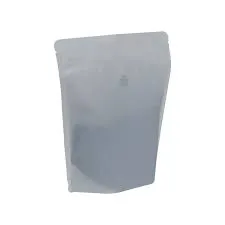- Afrikaans
- Albanian
- Amharic
- Arabic
- Armenian
- Azerbaijani
- Basque
- Belarusian
- Bengali
- Bosnian
- Bulgarian
- Catalan
- Cebuano
- chinese_simplified
- chinese_traditional
- Corsican
- Croatian
- Czech
- Danish
- Dutch
- English
- Esperanto
- Estonian
- Finnish
- French
- Frisian
- Galician
- Georgian
- German
- Greek
- Gujarati
- haitian_creole
- hausa
- hawaiian
- Hebrew
- Hindi
- Miao
- Hungarian
- Icelandic
- igbo
- Indonesian
- irish
- Italian
- Japanese
- Javanese
- Kannada
- kazakh
- Khmer
- Rwandese
- Korean
- Kurdish
- Kyrgyz
- Lao
- Latin
- Latvian
- Lithuanian
- Luxembourgish
- Macedonian
- Malgashi
- Malay
- Malayalam
- Maltese
- Maori
- Marathi
- Mongolian
- Myanmar
- Nepali
- Norwegian
- Norwegian
- Occitan
- Pashto
- Persian
- Polish
- Portuguese
- Punjabi
- Romanian
- Russian
- Samoan
- scottish-gaelic
- Serbian
- Sesotho
- Shona
- Sindhi
- Sinhala
- Slovak
- Slovenian
- Somali
- Spanish
- Sundanese
- Swahili
- Swedish
- Tagalog
- Tajik
- Tamil
- Tatar
- Telugu
- Thai
- Turkish
- Turkmen
- Ukrainian
- Urdu
- Uighur
- Uzbek
- Vietnamese
- Welsh
- Bantu
- Yiddish
- Yoruba
- Zulu
Understanding Cardboard and Its Uses in Everyday Life
What is Cardboard?
Cardboard is a versatile and environmentally friendly material that has become an integral part of our daily lives. It is primarily made from wood pulp, a renewable resource, which makes it a sustainable choice for packaging, shipping, and crafting. In this article, we will explore the characteristics, uses, and significance of cardboard in various aspects of modern life.
Characteristics of Cardboard
Cardboard is known for its lightweight yet robust nature, which allows it to withstand significant pressure without losing its shape. Typically, it consists of three layers an inner facing, an outer facing, and a fluted paper layer in between that adds rigidity and strength. This structure not only helps protect the items packed within but also makes cardboard an ideal material for a wide range of applications.
Moreover, cardboard is highly customizable. It can be easily cut, folded, and shaped to create boxes of various sizes and designs. This adaptability has made it a favorite among manufacturers and consumers alike, as it allows for creative packaging solutions tailored to specific products.
Uses of Cardboard
The most common use for cardboard is in packaging and shipping. Companies across various industries rely on cardboard boxes to transport goods safely. The durable nature of cardboard ensures that products remain secure during transit, reducing the risk of damage. In retail, cardboard is also utilized for displays and promotional materials to attract consumer attention.
cardboard what is

In addition to packaging, cardboard is widely used in the crafting and DIY community. Due to its ease of manipulation, people often turn to cardboard to create art projects, model buildings, and even furniture. This not only encourages creativity but also promotes recycling, as many individuals repurpose old boxes into new creations.
Cardboard is also playing a significant role in sustainable practices. With increasing awareness of environmental issues and the push for eco-friendliness, many companies are opting for cardboard packaging over plastic alternatives. Cardboard is recyclable and biodegradable, significantly reducing its environmental footprint compared to other materials. This shift contributes to a circular economy, where materials are reused and recycled rather than discarded.
The Importance of Cardboard in Our Lives
The significance of cardboard extends beyond its utility; it represents a conscious effort towards sustainability. As society becomes more environmentally aware, the demand for eco-friendly packaging solutions is growing. Cardboard’s recyclability makes it a preferred choice for businesses aiming to reduce waste and minimize their ecological impact.
Furthermore, during global crises such as the COVID-19 pandemic, the demand for cardboard surged as e-commerce expanded, and consumers turned to online shopping. This showcased the material's adaptability and resilience as it continued to serve essential roles in daily life, ensuring that goods reached consumers while maintaining safety and hygiene.
Conclusion
In conclusion, cardboard is more than just a simple packaging material. Its unique characteristics, versatile applications, and sustainable nature make it a vital part of modern society. As we continue to seek environmentally responsible solutions, cardboard remains at the forefront of innovative packaging and artistic endeavors. By recognizing its value, we can better appreciate the role cardboard plays in enhancing our daily lives while contributing to a more sustainable future. Whether it’s through shipping our online purchases or inspiring creativity in crafting, cardboard is a material that truly resonates with our needs and values.













